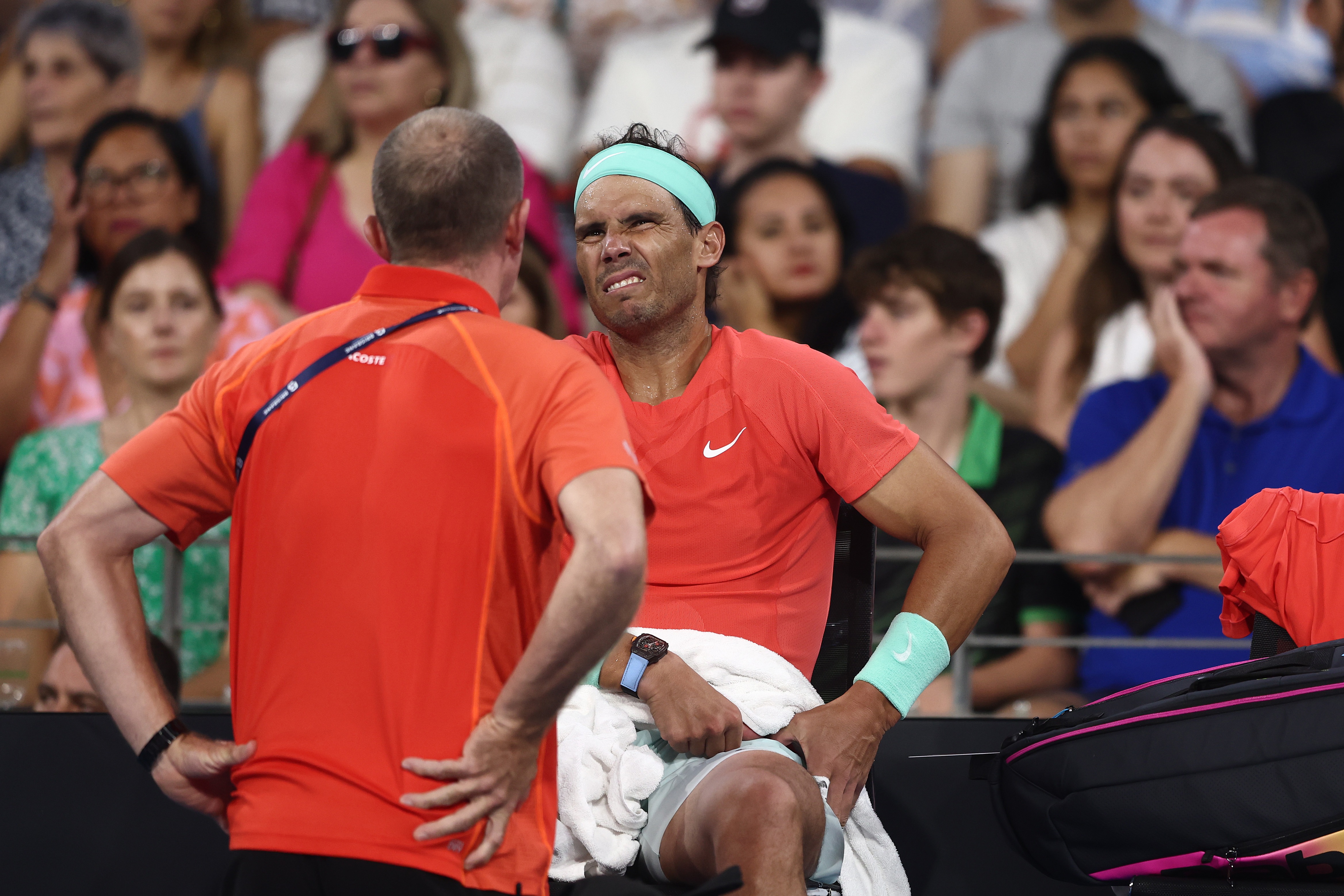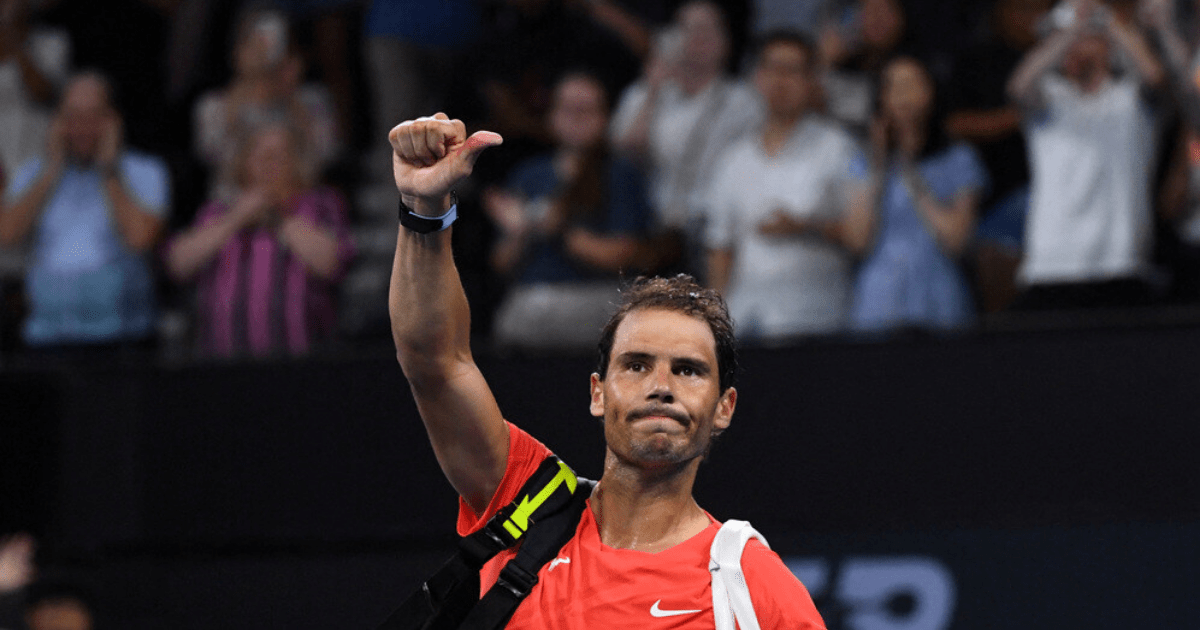The Blow to Tennis Fans
Rafael Nadal, the 37-year-old Spaniard, has made the difficult decision to withdraw from the Australian Open. This comes as a huge disappointment to tennis fans who were eagerly anticipating his return to the court after nearly a year on the sidelines.
A Strange Twist
During Nadal's recent comeback tournament in Brisbane, he suffered an injury that required a medical timeout. He was ultimately defeated by Jordan Thompson in three tight sets. Now, Nadal has made a bizarre claim about this latest injury, stating that it is unrelated to the hip injury that kept him out for the majority of 2023.
Good News for Nadal
Despite his withdrawal, Nadal sees a silver lining in his situation. He revealed on social media that he underwent an MRI and discovered a micro tear in a muscle, separate from his previous injury. He believes this is "good news" and is relieved that it is not a recurrence of his hip issue.
Looking Ahead
Nadal expressed his disappointment at not being able to compete at the highest level for five-set matches. He plans to return to Spain to seek treatment and rest. Looking to the future, Nadal aims to peak during the clay court season, a time when he has historically excelled.

Stars on the Comeback Trail
While Nadal's absence is a blow to the Australian Open, the tournament will still feature several stars making their comeback. Naomi Osaka and Emma Raducanu, both returning after lengthy absences, are set to compete in the women's draw. Amanda Anisimova and Angelique Kerber will also make their return.
Men's Draw Favorites
Carlos Alcaraz, the 20-year-old Grand Slam champion, will make his debut at Melbourne Park after missing last year's event due to injury. He will be a top contender for the men's singles title, alongside Daniil Medvedev and Jannik Sinner. However, Novak Djokovic, the perennial Australian Open champion, remains the one to watch.
Women's Draw Highlights
In the women's draw, world No1 Iga Swiatek has been in devastating form in the United Cup. Elena Rybakina, last year's runner-up, showcased her skills by defeating 2023 Aussie Open champion Aryna Sabalenka 6-0, 6-3 in Brisbane, setting the stage for an exciting competition.
Frequently Asked Questions
What is the daily schedule of a professional tennis player?
A top tennis player’s daily training program is rigorous and well-structured. It can include several hours of training on the tennis court. This includes technical drills as well as tactical practice and match play scenarios. Additionally, players engage in fitness sessions tailored to enhance strength, agility, and endurance, complemented by flexibility and recovery activities, such as stretching, massage, or physiotherapy. The importance of proper nutrition and psychological coaching is also a key component to ensuring that athletes are able to maintain their peak performance, both mentally and physically.
How important are nutrition and diet in training to become an elite tennis player?
Nutrition and diet are vital for any athlete aiming to perform at the highest level, and tennis players are no exception. An appropriate diet helps support intensive training. It provides the energy needed, aids in recovery, and lowers the risk for injury. A balanced diet for elite players includes carbohydrates, proteins and fats along with essential vitamins, minerals and nutrients. The importance of hydration cannot be overstated, as a healthy fluid balance is vital to maintain concentration and prevent fatigue.
What type fitness training is most important for tennis athletes?
Tennis is physically demanding and requires a mixture of aerobic endurance, strength and power. Tennis fitness training involves cardiovascular exercises that improve endurance and strength, plyometrics exercises and explosive movements for speed and power as well as agility exercises designed to improve footwork. The core stability exercises and balance drills are important for developing the muscular endurance, coordination, and strength necessary to handle the physical demands in tennis.
When can a player start training to improve their chances of becoming a pro?
There is no specific age for beginning professional tennis training, but starting early gives you an advantage. Most professional tennis players start training between the age of 4 and 7 years old. Early development is crucial for players to develop a solid base of skills, coordination, and technique. However, it’s crucial to balance training with general childhood development to nurture a passion for the game without causing burnout or injury.
How can tennis players balance their training with schoolwork?
The challenge of balancing the demands of academics and training is one that all tennis players face. The ability to manage time, prioritize, and create a schedule that works for you is essential. Online learning and flexible academic programmes can help young athletes accommodate their demanding training schedules and travel plans. The support of family, coaches, educational institutions, and other stakeholders is also crucial to ensuring that athletes can achieve their athletic dreams without compromising on their education.
Statistics
- On average, it’s estimated that only 1 in 5000 high-level junior tennis players will develop into internationally ranked professionals.
- Approximately 70% of a professional tennis player’s training time is devoted to developing technique and on-court strategies.
- Statistical trends indicate that top tennis players usually have at least 5 people in their support team, including coaches, fitness trainers, and physiotherapists.
- Engaging in structured video analysis sessions has been shown to improve a player’s tactical decision-making by approximately 35%.
- Nutritionists report that a tennis player’s diet should consist of about 55-60% carbohydrates, 15-20% protein, and 20-25% fats during intense training periods.
External Links
itftennis.com
myprocoach.net
tenniscompanion.org
wilsontennis.com
tennisfitness.com
How To
How to create a pre-match warm-up routine for tennis
A warm-up for tennis matches should prepare both the mind and body to compete. Start with a light cardio exercise such as jogging, jumping jacks or stair climbing to increase your heart rate. To increase flexibility, perform dynamic stretches on your arms, legs, and torso. Include sport-specific movements such as shadow swings with your racket to rehearse groundstrokes, volleys, and serves. Practice agility drills for your footwork. Finish with short serves or short points to improve timing. A good warm-up will improve your performance as well as reduce the chance of injury.
Did you miss our previous article…
https://www.sportingexcitement.com/tennis/furious-jelena-ostapenko-demands-umpire-never-officiate-her-matches-after-stunning-on-court-rant/

